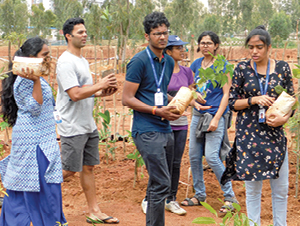The making of an urban forest

Q: Can you tell us a bit about the concept of an ‘Urban Forest’?
The best way to describe an urban forest is “Any place so dense with trees that you can’t even walk inside it”. The concept of urban forests defies the myth that forests and urban societies are mutually exclusive. Architecture traditionally planned for “edge habitats”, a space at the edge of a piece of land that was left undisturbed - allowing nature to regenerate undisturbed, and provide a healthy coexistence of nature and man. Urban forests are planted at a high density by introducing native species of trees in the proportions they are found within local forests. The balance of layers and species is maintained to ensure these complex ecosystems evolve as they were meant to - think of them as an efficient microcosm of what traditional forests are to our planet.
Q: What are the advantages of an ‘Urban Forest’?

Urban Forests not only provide a bridge between our communities and nature, but importantly address some of the most pressing issues addressing society and the world at large:
1) Clean Air - By providing a large lung space
2) Clean Water - By creating a large recharge area for ground water
3) Climate Change - By planting trees that sequester carbon
While Urban forests are not a replacement for traditional forests, they offer the best alternative to traditional landscape solutions that have been adopted in cities over the last few decades, and while we may not live within forests as our ancestors once did, Urban Forests are a way of bringing a slice of raw nature back into our everyday lives.
Q: What are your plans for Brigade Cornerstone Utopia?

We are planting over 12,000+ trees and bringing a diversity of over 100 species here. The Urban Forest at Brigade Cornerstone Utopia is our edge habitat and our answer to the increasing constraint of land and urban societies in the 21st century. It will be a green oasis, that really needs to be experienced.

Excerpts from a Q&A with
Varun Ravindra,
Founder of Vanantara

